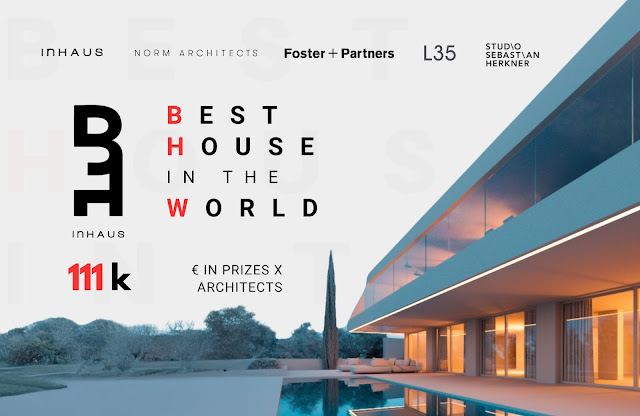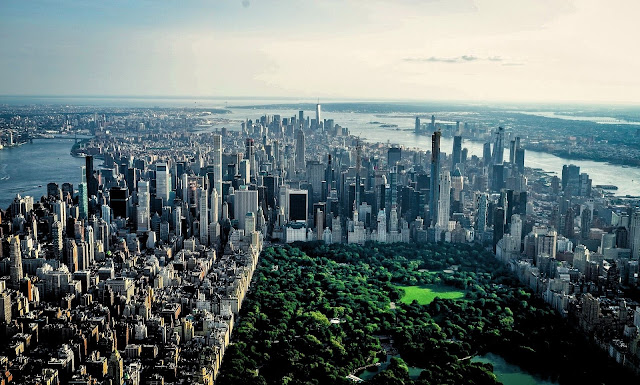The Myth of the "Best House Design" Competition
I have recently noticed how the internet is increasingly populated by pronouncements of 'Best House Design,' 'Most Innovative Home,' or 'Ultimate Lifestyle Design.' These titles, while effective at capturing attention and driving engagement within the vast sea of online content, compel us to scrutinize their underlying premise. Does a singular, objectively 'best house design' truly exist, or is this a fundamentally flawed concept that oversimplifies the complex relationship between people, place, and shelter?
My assertion is that the notion of a universal "best house design" is not only unattainable but also conceptually misleading. It strips the architectural object of its intrinsic connection to its purpose and its environment. To understand why, we must move beyond the idea of a house as a static ideal and see it, as suggested, much like a bespoke garment. A suit is not "best" in the abstract; it is best for the person wearing it, fitted to their unique measurements and intended for a specific occasion. Similarly, a house is profoundly defined by for whom it is built and where it stands.
The very essence of successful house design hinges on its ability to perfectly align with the specific needs, dreams, and daily routines of its future inhabitants. This fundamental element, "for whom" the house is being built, introduces such a vast spectrum of possibilities that the notion of a universally "best" solution becomes immediately unworkable. Just consider the sheer variety of individuals and groups who might call a house a home. For instance, the spatial requirements and need for privacy or communal areas will differ dramatically between a single person's dwelling and a bustling home for a large family with children of varying ages. Similarly, a house designed for a young couple embarking on their life together will likely have entirely different priorities than one for a retired pair seeking ease of maintenance and accessibility, or indeed a multi-generational family living under one roof.
Beyond family structure, individual lifestyles and hobbies impose distinct demands. An artist, for example, might need ample studio space and natural light, while a musician would prioritise sound isolation. A remote worker would require a dedicated office, a keen gardener extensive outdoor access, and an avid cook a large, well-equipped kitchen. All these passions directly influence the design. Furthermore, economic constraints are an undeniable part of the "for whom" equation. The design must be achievable within a given budget, which in turn influences everything from the overall size and choice of materials to technological integration and finishes. A design hailed as "best" for an unlimited budget is simply irrelevant for someone seeking affordable housing solutions.
Crucially, designing for individuals with disabilities or specific health requirements introduces critical considerations regarding layout, circulation, fixture placement, and material choices to ensure safety, comfort, and independence. An inaccessible "award-winning" design is unequivocally not best for someone who uses a wheelchair. Finally, cultural background and personal taste play a significant role. Aesthetic preferences and cultural norms around living spaces, privacy, hospitality, and social interaction all shape what feels like a "good" or "right" home. What one person finds beautiful or functional, another might find impractical or unappealing.
Each of these factors, often in intricate combinations, directly translates into specific functional requirements, spatial arrangements, material selections, technological integrations, and overall atmosphere. A minimalist, open-plan design might be ideal for one individual, whereas a family with young children might prioritise separate play areas and robust, easy-to-clean surfaces. An energy-efficient passive house, designed for a health-conscious owner, addresses a different set of priorities than a luxurious home focused on entertainment spaces and high-end finishes. To proclaim a single design as "best" is to arbitrarily favour one set of needs and preferences over the infinite possibilities presented by the diversity of human experience. It reduces the deeply personal and functional nature of shelter to a mere aesthetic or abstract ideal. A truly successful house design is "best" only insofar as it perfectly responds to the specific requirements and desires of the people who will call it home.
Beyond the human element, the physical location of a house - the "where" - acts as an equally powerful, and often non-negotiable, set of design determinants. The geographical, environmental, regulatory, and historical context of the site fundamentally shapes what is possible, appropriate, and effective in a design.
Climate, perhaps the most evident influence, dictates fundamental design responses. Extreme temperatures (hot or cold), precipitation levels, humidity, sun path, and prevailing winds all impact decisions regarding insulation levels, window placement and size, shading devices, roof pitch, material performance, and the necessity (or desirability) of active heating or cooling systems. A house designed for a tropical climate (prioritising ventilation and shade) would be entirely unsuitable - and far from "best" - in a subarctic region requiring heavy insulation and protection from extreme cold.
The shape, slope, soil conditions, and natural features of a plot also profoundly affect the building's footprint, foundation design, accessibility, drainage strategies, and relationship with the surrounding landscape. Building on a steep slope presents different challenges and opportunities than building on flat land, influencing the potential for multi-level designs or specific foundation types. Existing trees, rock formations, or views likewise become integral parts of the design process.
Moreover, the dimensions and orientation of the property directly limit the possible size and form of the building, the amount of outdoor space available, and opportunities for passive solar design. A narrow urban infill plot demands a different design strategy than a large rural property.
Local regulations and zoning are also critical. Building codes, zoning laws, setback requirements, height restrictions, material specifications (sometimes mandated for historical districts), and environmental protection regulations are legal frameworks that designers must operate within. These rules vary significantly by location and can dramatically shape the final design, irrespective of the client's desires or the site's natural features.
The local context also influences the practicalities of construction. The availability and cost of certain materials, the skill sets of local builders, and the proximity to suppliers can impact both the design choices (e.g., favouring readily available local stone or timber) and the overall budget. Utilising local resources can also contribute to the sustainability of the project. Finally, the surrounding built environment, local architectural traditions, and the history of the area can inspire or necessitate specific design choices to ensure the new building relates harmoniously to its context. In some cases, historical preservation guidelines may impose strict limitations on external appearance or materials.
These "where" factors are not merely constraints; they are integral design inputs that demand thoughtful, context-specific solutions. A design that ignores the local climate will result in an uncomfortable and inefficient house. A design that disregards the topography might lead to drainage issues or costly construction. A design that violates zoning laws simply will not be built. The "best" design for a particular location is one that responds intelligently and sensitively to its unique environmental and regulatory landscape.
The true complexity, and the source of genuine design challenge and opportunity, lies in the synthesis of the "for whom" and the "where." The needs of the occupants must be met within the possibilities and limitations of the site. For instance, a family's need for a large garden is dependent on the plot size and the local climate's support for vegetation. A remote worker's desire for quiet is influenced by the proximity of neighbors and the urban noise level. An elderly person's need for accessibility must be integrated with the site's topography.
This intricate interplay highlights why a pre-conceived "best" design, arrived at in a vacuum, is destined to fail when confronted with the messy realities of a specific client and a specific site. Excellence in house design is not about applying a universal template; it's about the skillful interpretation and integration of these myriad factors into a cohesive, functional, and beautiful whole that is uniquely suited to its purpose and place.
Given this understanding, what then are we to make of "Best House Design" competitions or rankings? While they can serve valuable purposes - showcasing innovative materials, highlighting sustainable technologies, promoting aesthetic trends, or celebrating architectural ingenuity - they are inherently limited in their ability to declare a truly "best" house design.
Often, such competitions are judged based on criteria that can only capture a partial picture: aesthetic appeal (highly subjective), photographic presentation, novelty of form, or adherence to a specific technological standard. They rarely, if ever, can adequately assess how well the house actually functions for its specific occupants over time, how it truly performs within its specific microclimate, or how effectively it responded to the unique challenges and opportunities of its site and budget. A stunning house showcased in a magazine might be a nightmare to live in due to poor spatial planning for the actual family residing there, or it might be completely impractical for its climate.
In conclusion, the notion of a universal "Best House Design" is a captivating but ultimately misleading simplification. A house is not a work of abstract art to be judged solely on form or aesthetic trend, nor is it a piece of technology with a single, objective measure of performance independent of its use. It is a living, breathing entity deeply connected to the lives it shelters and the ground it occupies.
True excellence in residential design lies not in the pursuit of a mythical, one-size-fits-all "best," but in the dedicated, thoughtful process of understanding the specific "for whom" and the precise "where." The architect's role is one of sensitive interpretation, skillful synthesis, and creative problem-solving, translating the unique narrative of the client and the site into a built form that is perfectly tailored.
The "best house" is not a design that wins an abstract competition; it is the house that is best for its inhabitants, functioning beautifully and comfortably in its specific location, fulfilling its purpose with grace and efficiency. It is the house that feels like home, precisely because it was designed to be their home.
Let's celebrate the art and science of designing with purpose, focusing on the perfect fit rather than an unattainable universal best. If you need a perfectly designed project to fit your unique needs, please don't hesitate to contact MARCO LLC.






Comments
Post a Comment